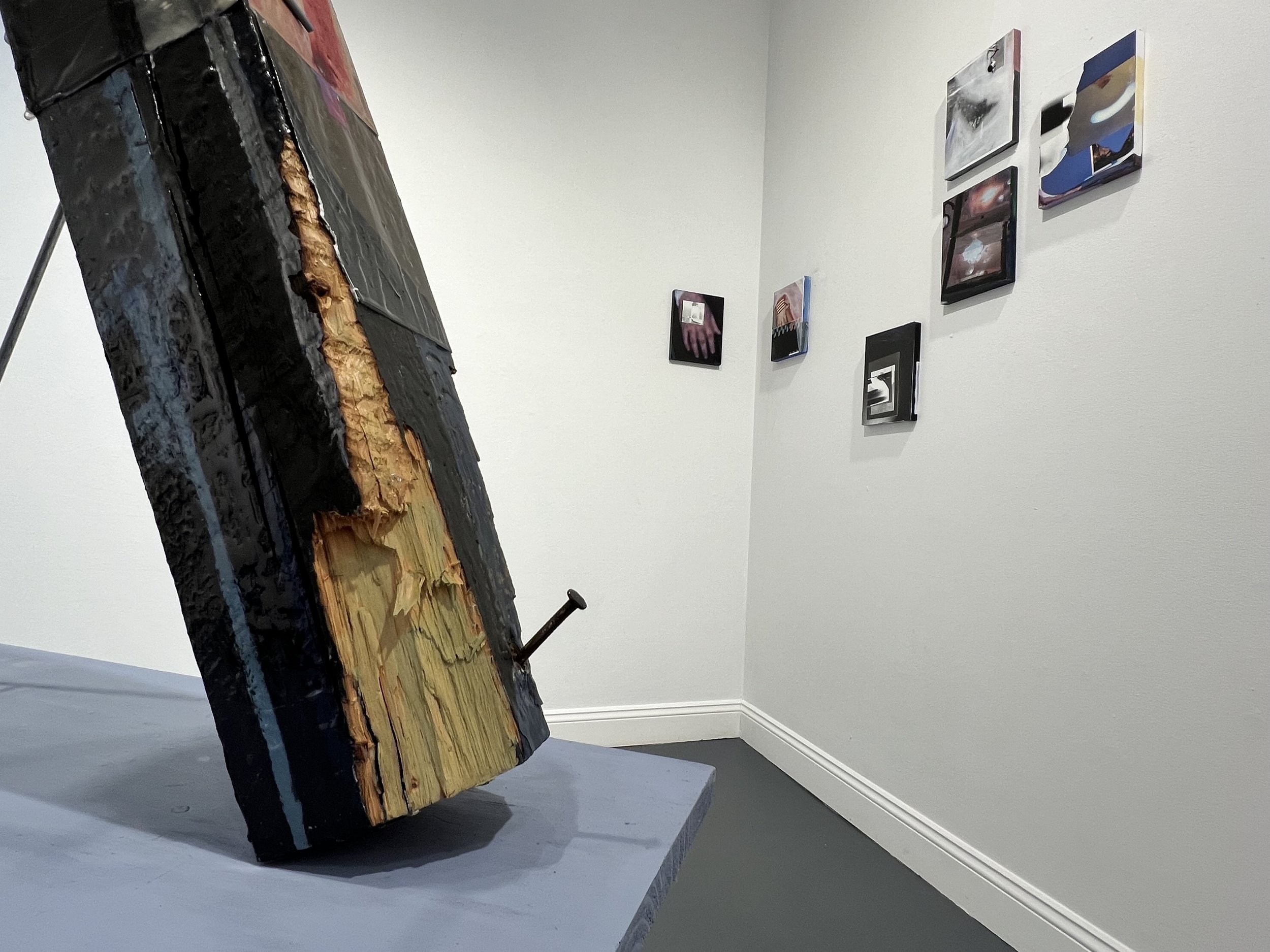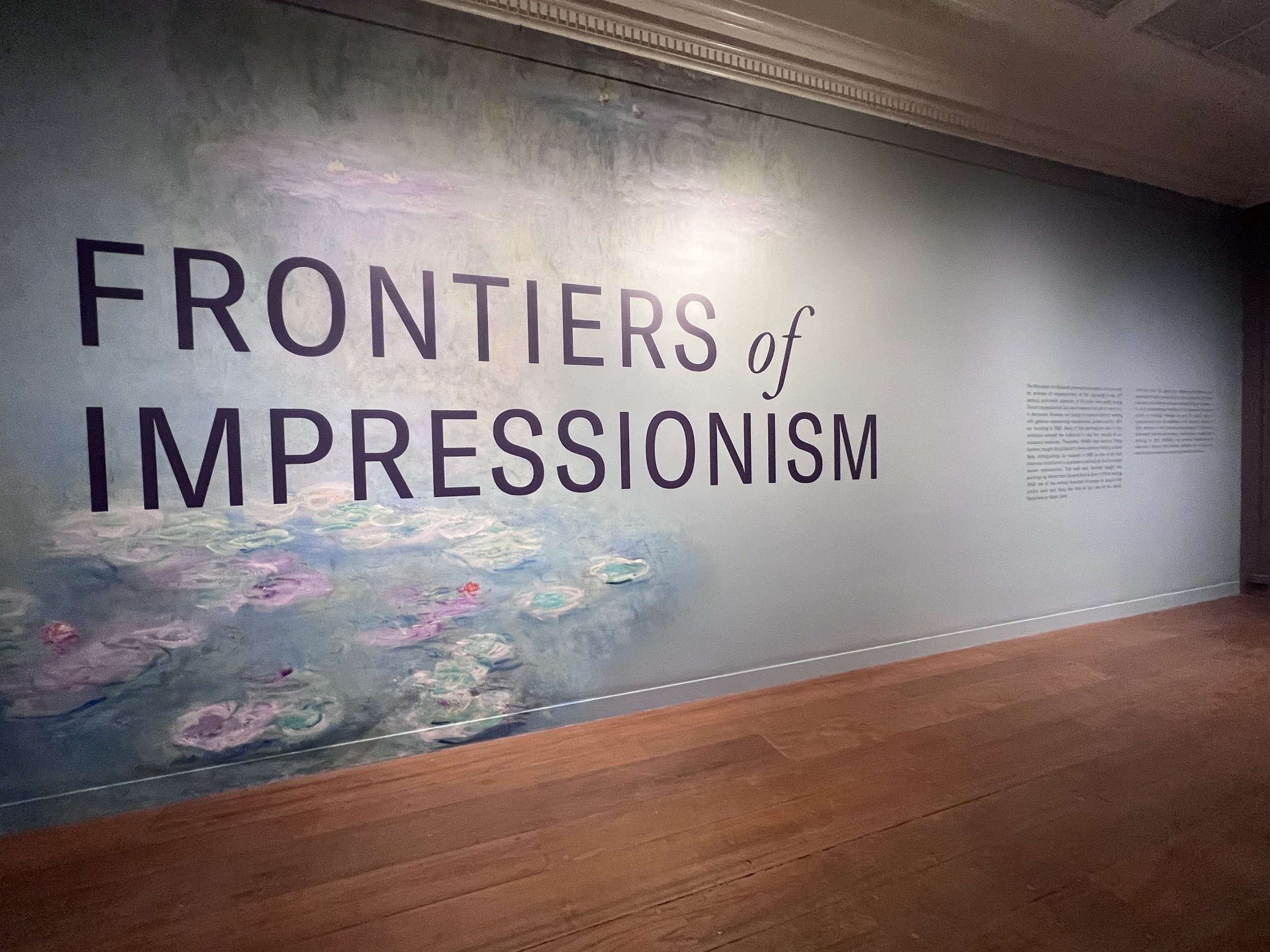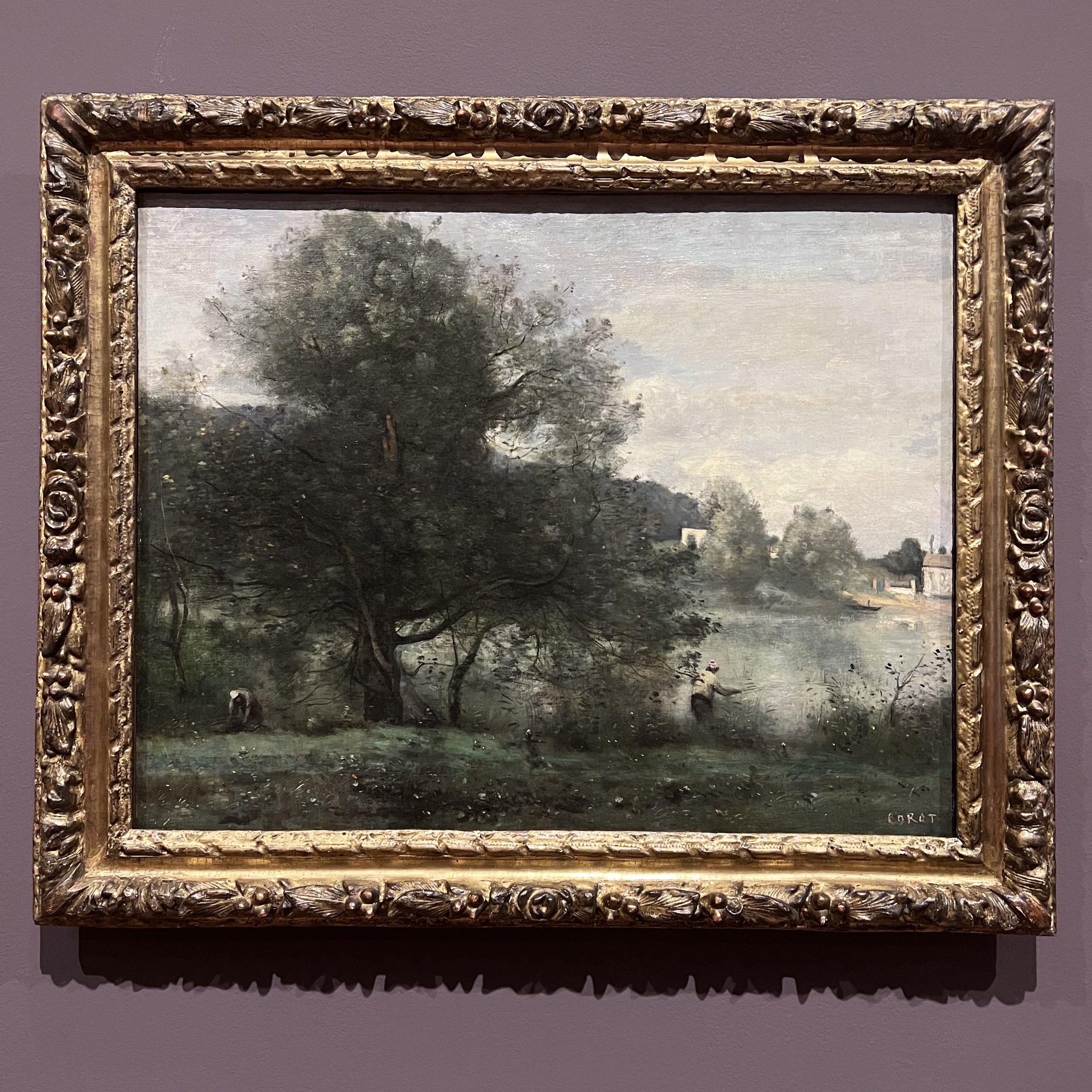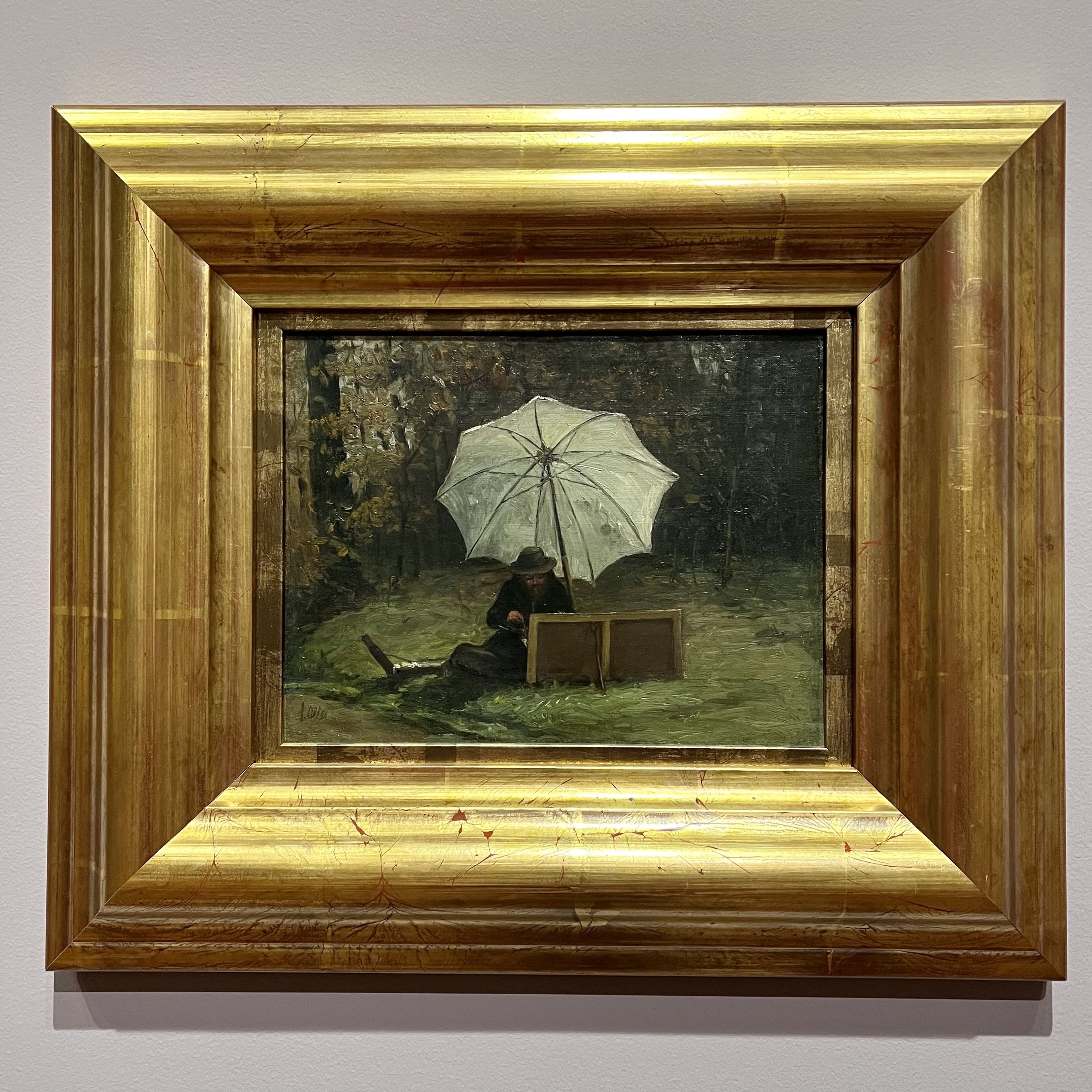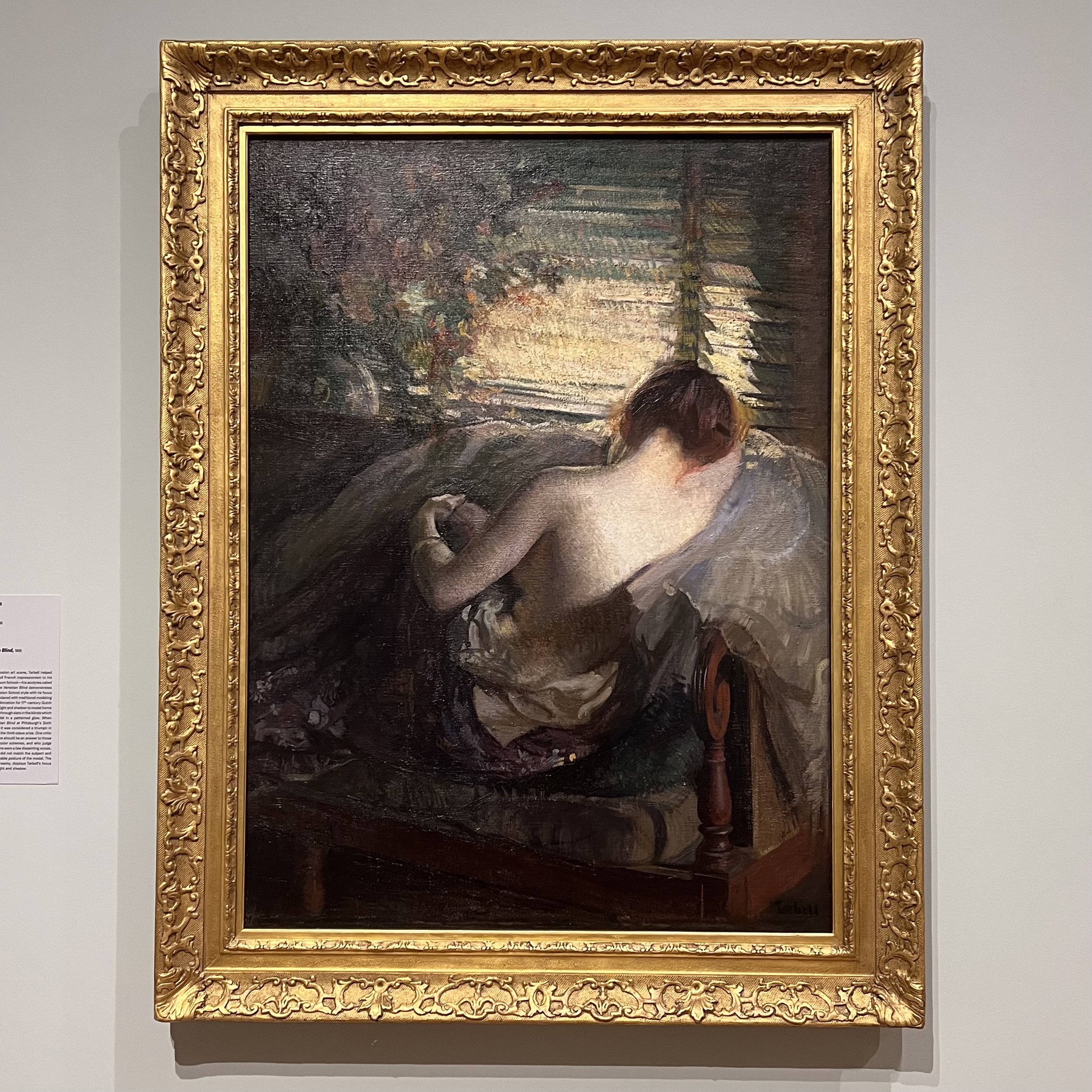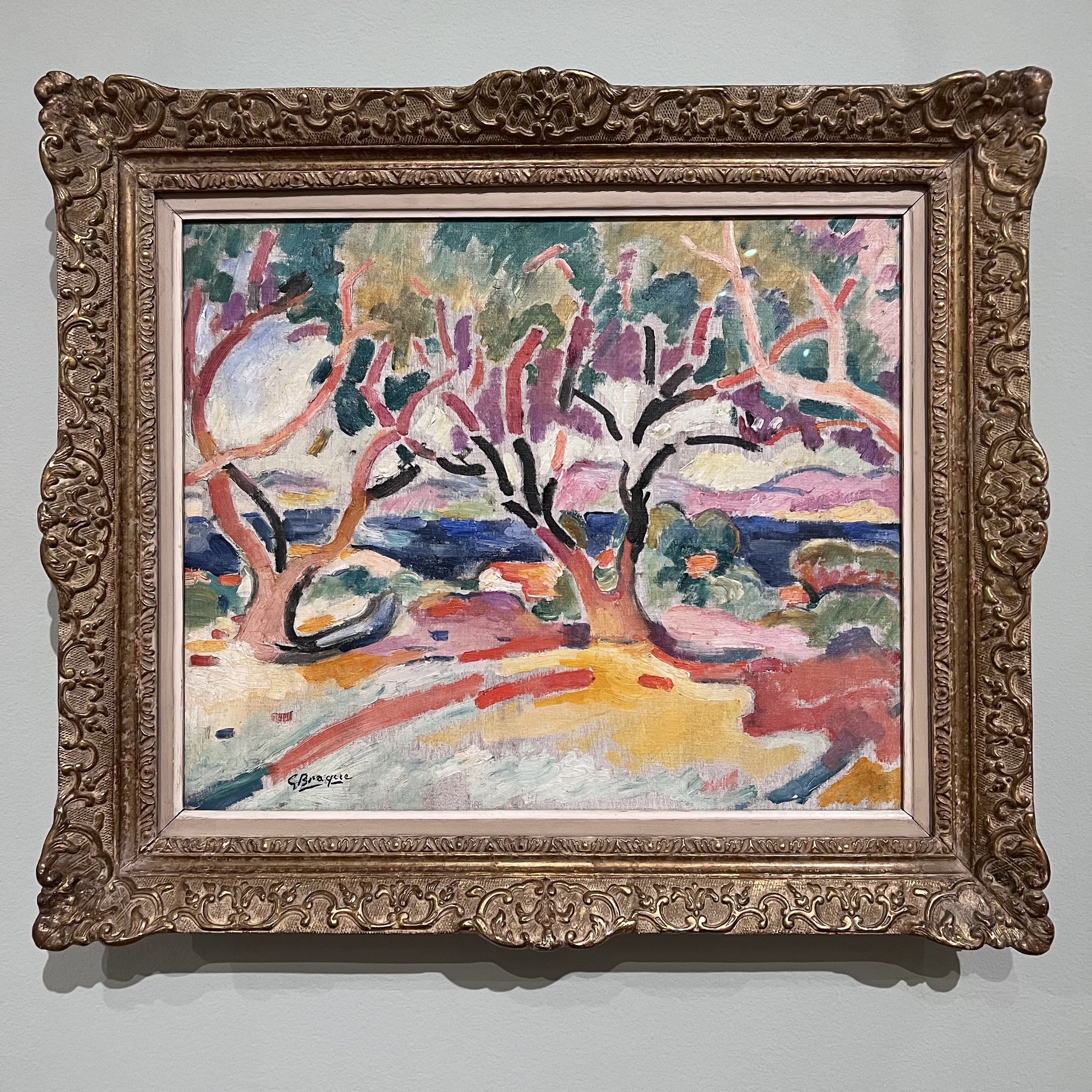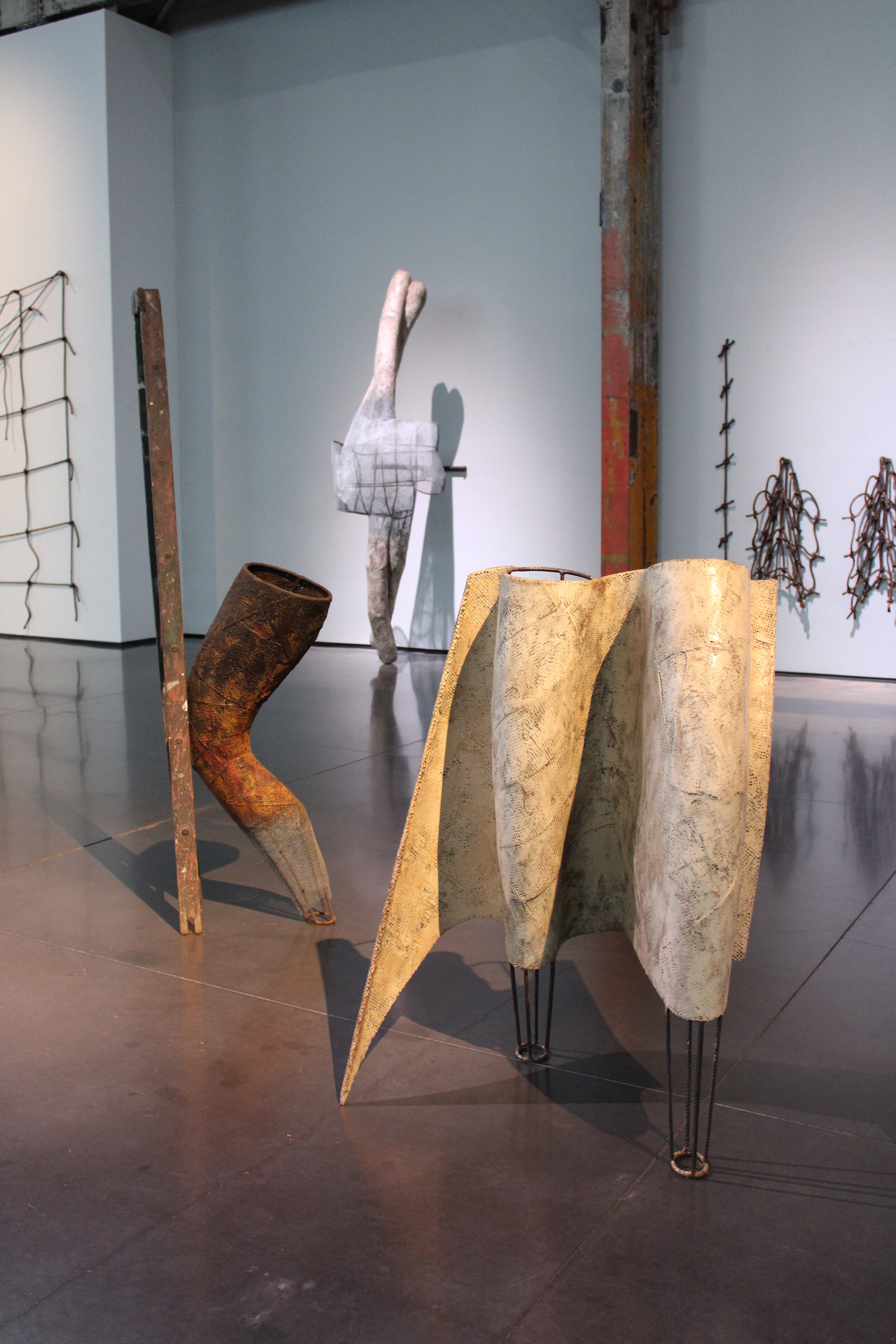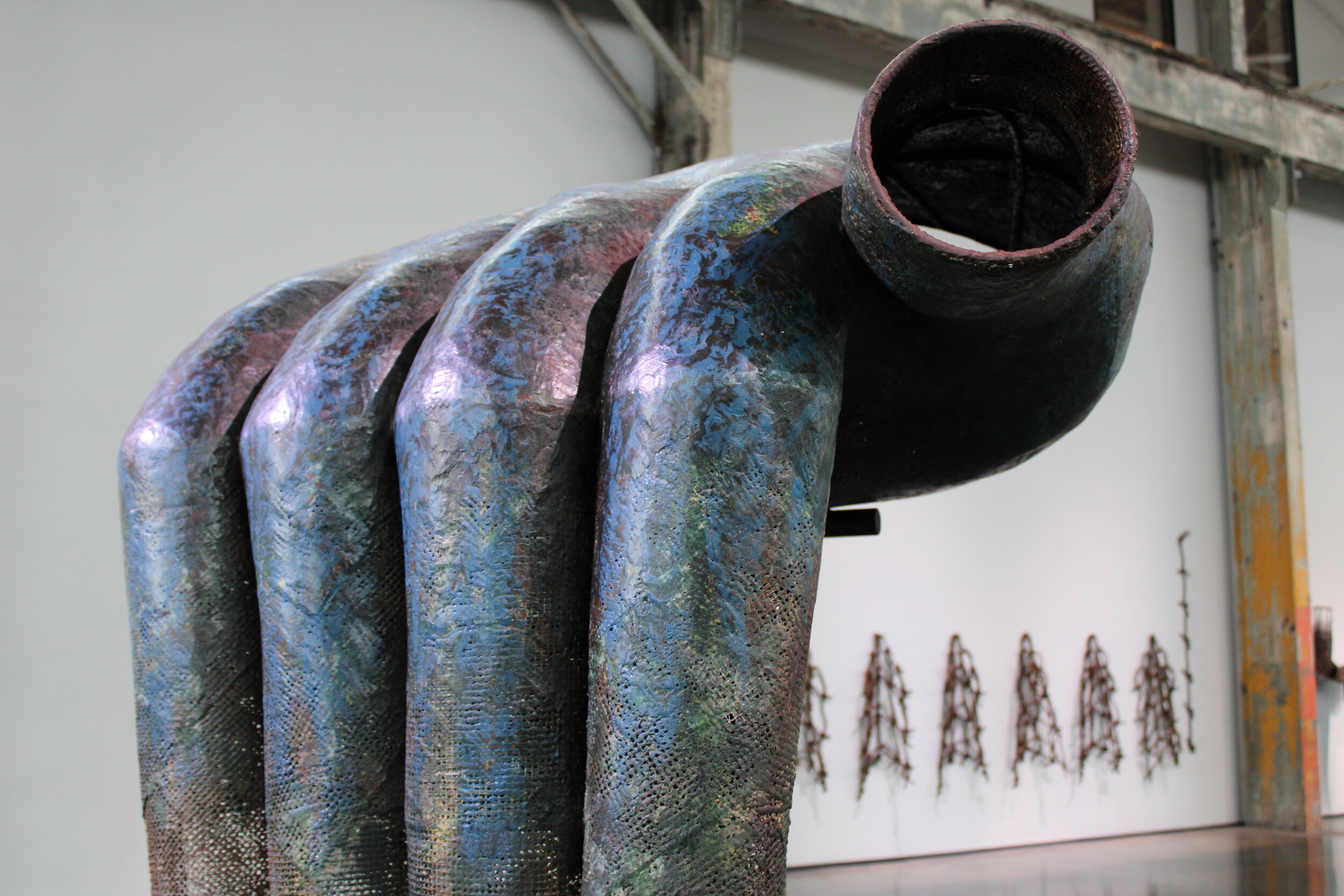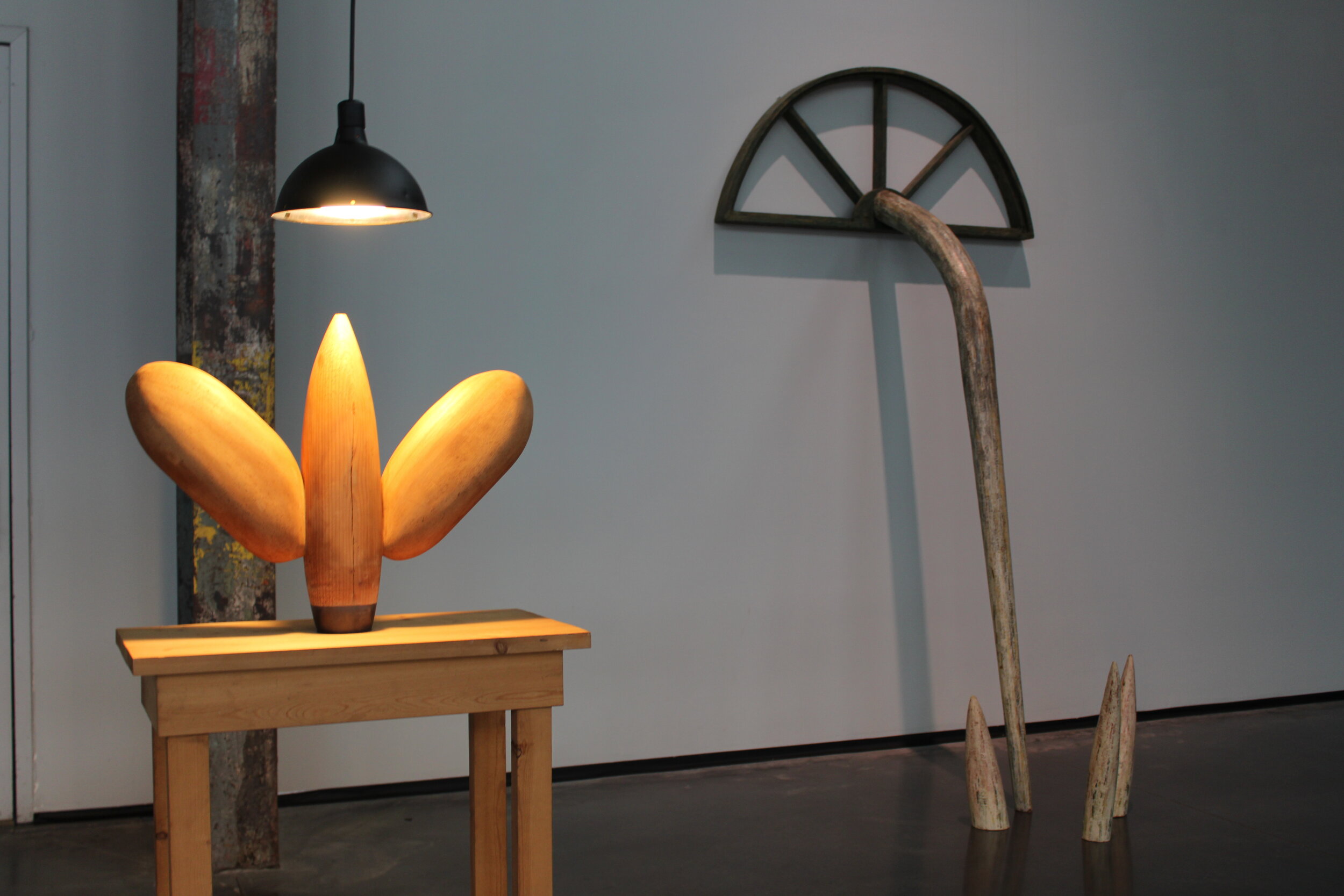Photography, grief, and memory are linked. Joan Didion, in her autobiographical chronicle The Year of Magical Thinking shares the advice that in order to get over the death of a family member one must “let them become the photograph on the table”. For photographer and mixed media artist Douglas Breault, his art practice often centers on the elegiac, and beyond that on the mournful quality of memory that can embed itself in the photographic image. A solo exhibition of Breault’s photo-based work at Stonehill College’s Carole Calo Gallery allows viewers to experience the artist’s immersive use of photography to probe these potent themes in ways that are beautiful and deeply affecting.
Breault’s exhibition, evocatively titled who decides where a roof ends, includes straightforward photographs exhibited alongside works that blur the bounds of photography, sculpture, and assemblage. In addition to photographs, Breault employs found objects: a whistle, a pane of glass, a clamp, a block of wood with a nail jutting out. The sum of all these parts is a collection that probes ideas of home, memory, grief, and the ways in which vision and remembrance are shaped.
One of the through lines in Breault’s work is light, both in specific forms - like a lamp or a flame - and the general light which acts as the foundational tool in all photography. The lights in Breault’s work feel like demarcation points but also hint at the ephemeral nature of all things. Times change, passages occur, lights are snuffed out. Much of Breault’s art is connected to his own experience of familial grief and the expressive and poetic elements of his visual work have a magnetic quality for others with similar experiences.
Breault describes his exploration of loss in his statement by saying, “My curiosity questions the limitations of a photograph to accurately depict a life, contemplating how an image can be unfolded or obscured to describe a person or place that is paradoxically missing.”
Breault is one of the most promising photographic practitioners in the Northeast. In addition to his work as an artist, he is also the Exhibitions Director at Gallery 263 in Cambridge and has also taught art at area colleges, including at Bridgewater State University, Babson College, Holyoke Community College, and the Rhode Island School of Design. He earned his BA from Bridgewater State and his MFA from the School of the Museum of Fine Arts at Tufts University. I previously interviewed Doug for my Fine Art Insights podcast, and he also exhibited work in the exhibition Housewarming at my Project Space in Providence.
For emerging artists studying art at Stonehill, and for those who are able to visit Breault’s show at the Carole Calo Gallery, his work offers an exciting alternative to the staid and static interpretations that photographers regularly present. In a world full of images, often consumed through cold screens as social media content, the engaging and inventive way in which Breault manipulates photography to make it real and present merits recognition. His photographs go beyond the expected and break out of the frame to become something entirely new.
Breault’s solo exhibition at Stonehill College is one of the best shows to see right now in New England and offers a chance to fundamentally change the way viewers read photography.
Douglas Breault’s exhibition, who decides where a roof ends, continues through January 26, 2024 in the Carole Calo Gallery at Stonehill College in Easton, Massachusetts. Learn more about Breault’s work at his website www.douglasbreault.com, or follow his studio work on Instagram at @dug_bro. Click on the images below for expanded installation views.

